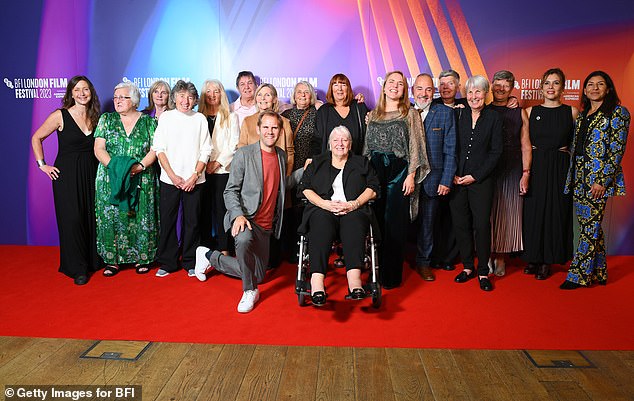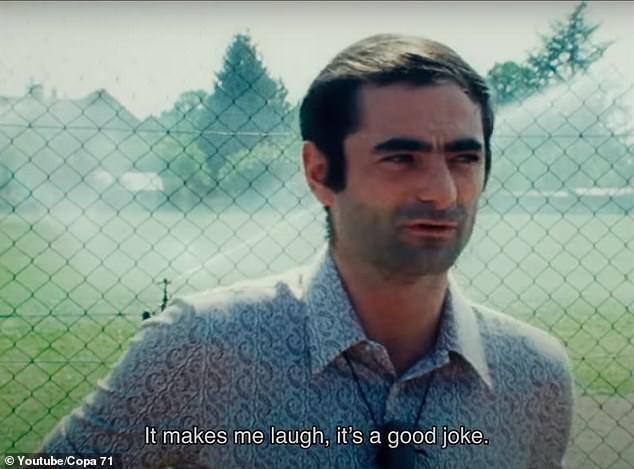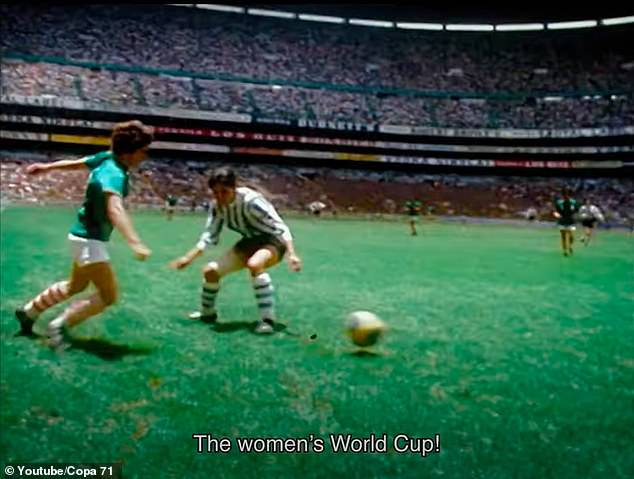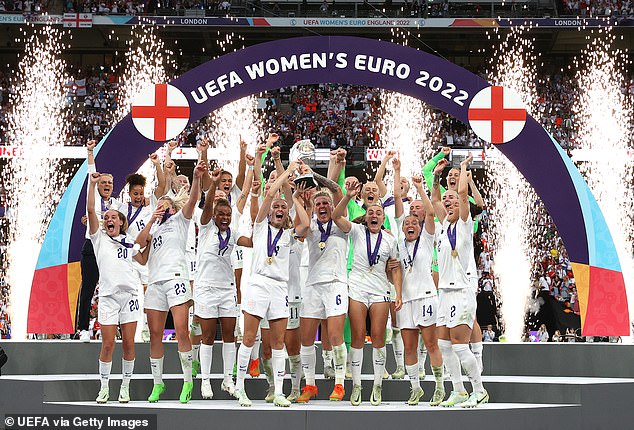Copa 71 review: New film tells the incredible story of the Lost Lionesses who played in trailblazing Women’s World Cup in Mexico before 100,000 fans – only to be BANNED by the FA
Welcome to the biggest celebration of women’s football ever, proclaims an energetic Mexican commentator.
The year is 1971 and a crowd of 110,000 people is packed into the Azteca stadium to watch a sport described by one French observer as “a curiosity – both erotic and comic.”
Images of this tournament have been hidden for more than 50 years. Copa 71, a documentary produced by Serena and Venus Williams, shines a light on the women shunned by history.
From the raucous crowd, the widespread television coverage and a semi-final that ends in a straight punch-up, it’s a story that has to be seen to be believed.
The Football Association’s 50-year ban on women playing football had just been lifted when Harry Batt, a bus driver who had fought in the Spanish Civil War, assembled a team of players, the youngest of whom was 13, to represent their country.
The England team, wearing sombreros and more than a few punches, pictured on their return from Mexico for the Copa 71, a tournament that is now the subject of a documentary

Members of the 1971 England women’s football team at the premiere, including Jill Stockley, Val Cheshire, Janice Barton, Yvonne Farr, Marlene Collins, Paula Raynor, Trudy McCaffrey, Louise Cross and 1971 manager Harry Batt’s son Kieth Batt posing with producer Victoria Gregory, director Rachel Ramsay and director James Erskine
Batt is described as a man who didn’t play by the rules. He had founded Chiltern Valley Ladies two years earlier and saw the sporting potential in women’s football. Others just saw an opportunity to ‘stare at their legs’, as one French player put it.
In 2004, Sepp Blatter, then president of FIFA, suggested that women should wear ‘skimpier’ shorts to increase the game’s popularity.
Twenty years later, women’s football is still far from those stereotypes. Players are seen as strong role models and as financial assets.

In the last three months, the record transfer price for a female footballer has been broken twice and now stands at €735,000 (£685,000) for Racheal Kundananji’s move from Madrid CFF to Bay FC.
National teams and clubs are selling out large stadiums, while brands and broadcasters all want to get in on the action.
In 1971, women’s football was seen as a joke by the men who ruled the governing bodies. But for three weeks between August and September, the sport took center stage when an unlikely business opportunity was seized by Mexican television company Televisa.
The 1970 World Cup, won by Pele’s Brazil, had taken place a year earlier and was the first to be televised in color. Televisa wanted to maintain commercial momentum.
Italy had hosted an impromptu Women’s World Cup in 1970, but Mexico thought they could produce a bigger and better version.
FIFA was vociferously against the idea, threatening the Mexican Football Federation with fines and bans if they allowed matches to be played on grounds they controlled.

The Copa 71 tournament was played in front of huge crowds, especially in the Azteca

Six countries took part, with Denmark winning the tournament when they defeated hosts Mexico
What FIFA didn’t expect was that Televisa could do whatever they wanted in the stadiums they owned – the Azteca and Jalisco – the country’s biggest venues. The task, it seemed, was to fulfill them.
As the remarkable footage shows, fans showed up in droves.
“The tournament organizers had no doubt that they could get people into stadiums and that it would be a huge commercial and sporting success,” Rachel Ramsay, co-director of Copa 71, told Mail Sport.
‘They used the same infrastructure as for the Men’s World Cup. They all threw the same media and resources at this women’s tournament.
‘I think that’s the most special thing.’
Unable to officially call themselves England, the first ‘Lionesses’ were known as the ‘British Indepence’ team. When they arrived, they were greeted at the airport by thousands of fans.
“When we got off the plane it was angry – the fans, police escorts, TV,” Chris Lockwood, who was 15 at the time, told Mail Sport.

Unfortunately, as the film shows, many within football regarded the women’s game as a ‘joke’

The tournament created a lot of excitement in Mexico, with packed stadiums and television coverage
‘We thought that if we were lucky we could play in a small stadium, with only a few people watching. We had no idea what awaited us. ‘
England were eliminated in the group stages, losing to Mexico and Argentina, with the young players struggling in the humidity.
‘None of us had been on a plane before – we didn’t even know what the altitude was!’ says Lockwood.
‘We played in parks, we used to shout at each other. When we entered the Azteca to the loud cheers of the crowd, we no longer had any communications to fall back on.”
Women had been banned from football by the FA and other federations in 1921 because the game was deemed ‘unsuitable for women’.
There is some irony when you look at what happened in the semi-final between Mexico and Italy. Chaos ensued when the Italians, who lost 2-1, had two goals disallowed by the referee.
Punches were thrown and players from both teams were kept apart by police. The match had to be ended 10 minutes early to prevent more violence.

These lost lionesses proved to be pioneers for the England team that won Euro 2022
Denmark went on to win the final, with captain Inger Pedersen being lifted into the air by her teammates – an image strikingly similar to that of Bobby Moore holding the Jules Rimet in 1966.
For three weeks these players lived their dreams, but the euphoria did not last. Each team returned home with a ‘feeling of nothingness’, the tournament erased from consciousness.
The English players were again suspended by the FA, players under 16 for three months and players over 16 for six months. Batt was banned for life and never succeeded again.
“We never saw each other as a group again for 47 years,” Lockwood says. “When we got back together and talked, we all had the same thing, where none of us had ever told anyone.
“I think it’s because we were ashamed and did something wrong.”
Nine of that England team, along with more than 87,000 others, watched as the Lionesses made history by winning the 2022 European Championship at Wembley. That crowd was 22,808 less than the gates at the Azteca.

The popularity of the women’s game has exploded, helped by the success of the England team
How did it take 51 years to even come close to what was achieved in 1971? The answer seems to be fear. That tournament showed what women’s football could have been: popular and financially viable. That was a threat to the men in power.
Only recently has the Danish Federation recognized the achievements of their World Cup winners, while the ‘Lost Lionesses’ have never been recognized by the FA. It is definitely time for that to change.
Perhaps the Italian Elena Schiavo best describes the lasting memory of 1971: ‘A fairy tale, in good and bad times.’
Copa 71 is in cinemas from March 8
